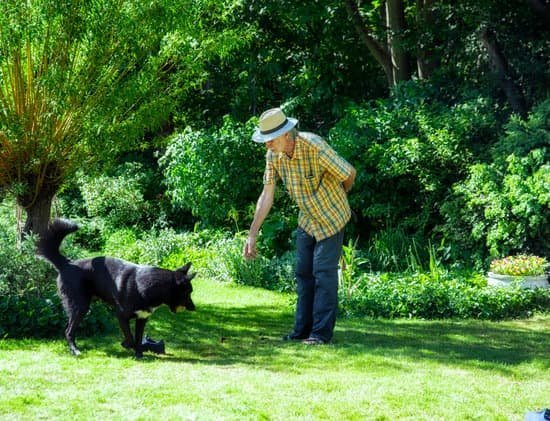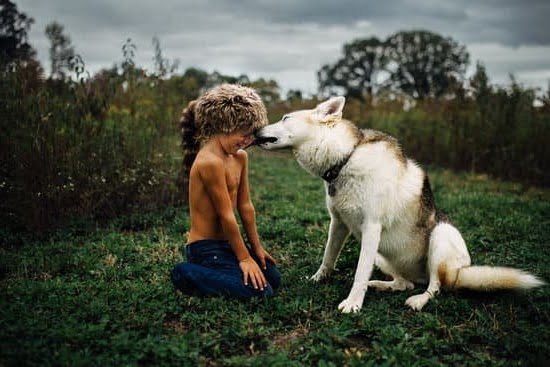Are you wondering how to train a dog to protect you? Training a dog for protection is an important aspect of being a responsible pet owner. Whether it’s for personal security or to protect your property, having a well-trained protection dog can provide you with peace of mind. This article will guide you through the process of training your dog to be an effective protector while also ensuring their safety and well-being.
First, we will explore the importance of training a dog for protection, including the benefits it can bring to both you and your furry companion. Then, we’ll delve into selecting the right breed for protection training, as not all dogs are suitable for this type of work. Next, we’ll discuss the crucial step of developing trust and bond with your dog, as this forms the foundation for successful protection training.
Following that, we’ll cover basic obedience training as a crucial foundation for protection training, as well as teaching your dog to recognize threatening behaviors. From there, we’ll introduce advanced protection training techniques and discuss how to ensure the safety and well-being of your dog during this process. Finally, we will touch on the legal and ethical considerations of owning a protection trained dog and explore maintenance and continued training for long-term protection readiness.
Selecting the Right Breed for Protection Training
When it comes to training a dog for protection, choosing the right breed is crucial. Not all dogs are suited for protection training, and some breeds are naturally better at it than others. Breeds such as German Shepherds, Rottweilers, Doberman Pinschers, and Belgian Malinois are commonly used for protection work due to their intelligence, strength, and natural protective instincts.
It’s important to consider the characteristics of the breed when selecting a dog for protection training. For example, German Shepherds are known for their loyalty and ability to bond closely with their owners, making them great candidates for protection training. On the other hand, Rottweilers are strong and confident dogs that can be trained to protect their owners effectively.
In addition to considering the breed’s natural traits, individual temperament also plays a significant role in determining whether a dog is suitable for protection training. Dogs that display fearfulness or aggression towards people without cause may not be ideal candidates for this type of training. Therefore, it’s essential to evaluate each dog’s temperament before embarking on protection training.
| Breed | Suitability for Protection Training |
|---|---|
| German Shepherd | Highly suitable due to loyalty and protective instincts |
| Rottweiler | Strong and confident, making them effective protectors |
| Doberman Pinscher | Known for their alertness and capability in protection work |
Developing Trust and Bond With Your Dog
Building a Strong Relationship
Developing trust and a strong bond with your dog is crucial before beginning protection training. A strong relationship will ensure that your dog looks to you for guidance and protection, making them more likely to defend you when necessary. Spend quality time with your dog, engage in interactive play, and establish yourself as the leader through consistent structure and positive reinforcement.
Effective Communication
Clear communication is key to building trust with your dog. Learn to understand your dog’s body language, vocalizations, and overall behavior to effectively communicate with them. Use positive reinforcement techniques such as treats, praise, and affection to reinforce good behavior and create a positive association with training.
Consistency and Patience
Consistency and patience are essential when building trust and the bond with your dog. Be patient with your canine companion as they learn to trust you and the training process. Consistent training sessions and clear expectations will help strengthen the bond between you and your dog.
Training a protection dog requires dedication, time, and commitment from both you and your furry friend. By developing trust and a solid bond with your dog, you are laying the foundation for successful protection training while ensuring a harmonious relationship based on mutual respect.
Basic Obedience Training as a Foundation for Protection Training
Before embarking on protection training, it is crucial to establish a strong foundation of basic obedience training for your dog. This will not only make the protection training process smoother but will also set the groundwork for effective communication and control between you and your dog.
Here are some essential basic obedience commands that are important for protection training:
- Sit: Teaching your dog to sit on command is a fundamental skill that will be useful when controlling your dog in various situations.
- Stay: This command is vital for maintaining control over your dog, especially in potentially dangerous situations where you need them to stay put.
- Come: Recall is an important aspect of protection training as it ensures that your dog can return to you when called, even in the midst of distractions or potential threats.
- Heel: Teaching your dog to walk beside you in a controlled manner is essential for managing their behavior when encountering potential dangers.
By mastering these basic obedience commands, you will lay the groundwork for effective protection training with your dog. These commands provide the basis for building trust, communication, and control, which are essential components of successful protection training.
In addition to these commands, it’s crucial to reinforce positive behaviors and discourage negative ones through consistent praise and rewards. This will create a solid foundation upon which more advanced protection training techniques can be built.
Teaching Your Dog to Recognize Threatening Behavior
One key aspect of this training is socialization. Exposing your dog to various people, environments, and situations from a young age can help them differentiate between normal and threatening behavior. Additionally, introducing controlled scenarios where your dog can observe and respond to non-threatening strangers versus individuals exhibiting suspicious behavior can aid in their recognition skills.
Another important element is obedience training. Teaching your dog basic commands such as “watch,” “alert,” or “retrieve” can help them understand when they need to pay attention and potentially take action in response to perceived threats. Consistent practice and positive reinforcement are essential in reinforcing these commands and ensuring that your dog responds appropriately in different situations.
Furthermore, seeking the guidance of a professional trainer experienced in protection training can be beneficial. They can provide specialized techniques and personalized coaching based on your dog’s breed, temperament, and your specific protection needs. With consistent training, patience, and positive reinforcement, you can effectively teach your dog to recognize threatening behavior and respond accordingly for optimal protection.
| Protection Training Tips | Details |
|---|---|
| Socialization | Expose your dog to various people, environments, and scenarios to help them differentiate between normal and threatening behavior. |
| Obedience Training | Teach basic commands such as “watch,” “alert,” or “retrieve” for appropriate responses to perceived threats. |
| Professional Guidance | Consult with a skilled trainer for specialized techniques tailored to your dog’s breed, temperament, and specific protection needs. |
Introducing Advanced Protection Training Techniques
Gradual Exposure to Controlled Threats
Once your dog has mastered the basic obedience training and has shown an understanding of recognizing threatening behavior, you can begin introducing advanced protection training techniques. Gradual exposure to controlled threats is a crucial step in this process.
This involves simulating threatening situations or scenarios while ensuring that the environment is safe and controlled. It is important to start small and gradually increase the intensity of the simulated threats as your dog becomes more confident and proficient in responding to them.
Training With Professional Handlers
To ensure that your dog receives the best possible training, consider enlisting the help of professional handlers who specialize in protection training. These experts have extensive experience in working with protection dogs and can provide valuable guidance in refining your dog’s skills. Training with professional handlers also exposes your dog to different environments, people, and situations, which can further enhance their ability to protect you effectively.
Creating Realistic Scenarios
As your dog progresses in their protection training, it is essential to create realistic scenarios that mimic potential real-life threats. This could involve practicing in different locations such as parks, parking lots, or even at home. By exposing your dog to a variety of environments and scenarios, you are preparing them to respond effectively no matter where you may be when a threatening situation arises.
Training a dog to protect you requires patience, dedication, and ongoing commitment. By carefully implementing advanced protection training techniques and seeking professional guidance when necessary, you can ensure that your dog becomes a reliable and capable protector while still maintaining their safety and well-being throughout the process.
Ensuring the Safety and Well-Being of Your Dog During Protection Training
When training a dog for protection, it is crucial to prioritize their safety and well-being throughout the process. Protection training can be physically and mentally demanding for the dog, so it is important to approach it with caution and responsibility. Here are some key considerations for ensuring the safety and well-being of your dog during protection training.
First and foremost, it is essential to seek guidance from a professional trainer who has experience in protection training. They can provide valuable insight into the appropriate techniques and methods to ensure that the training is conducted safely. Additionally, they can tailor the training program to suit your dog’s temperament and abilities, minimizing the risk of injury or stress.
Furthermore, regular health check-ups with a veterinarian are essential during protection training. This ensures that your dog is in optimal physical condition and can handle the demands of the training. It also allows any potential health issues to be identified early on, preventing them from escalating due to the rigorous nature of protection training.
Another crucial aspect of ensuring your dog’s safety during protection training is providing adequate rest and recovery time. Just like humans, dogs need time to recuperate after intense physical or mental activity. Overtraining can lead to fatigue, muscle strain, and decreased performance. Therefore, scheduling regular rest days into your dog’s training routine is essential for their overall well-being.
Ultimately, prioritizing your dog’s safety and well-being during protection training not only safeguards their physical health but also helps strengthen the bond between you and your canine companion. By approaching protection training responsibly, you can ensure that your dog is both capable of protecting you and leading a happy, healthy life.
The Legal and Ethical Considerations of Owning a Protection Trained Dog
Training a dog to protect you can be an effective way to enhance your personal safety and security. However, it is crucial to understand the legal and ethical considerations of owning a protection-trained dog. Here are some important factors to consider:
- Legal Requirements: Before embarking on protection training for your dog, it is essential to be aware of any laws or regulations in your area pertaining to owning a protection-trained dog. Some jurisdictions may have specific licensing requirements or restrictions on certain types of guard dogs.
- Liability: Owning a protection-trained dog comes with potential liability implications. If your dog injures someone while protecting you, you could be held legally responsible. It’s important to consult with a legal professional to understand your rights and responsibilities as a dog owner.
- Social Responsibility: While having a protection-trained dog can provide a sense of security, it is important to consider the potential impact on your community. Properly trained dogs should only exhibit protective behaviors when necessary and under control, without posing a threat to others.
In addition to legal considerations, there are ethical implications associated with owning a protection-trained dog:
- Responsible Ownership: It is essential for owners of protection-trained dogs to prioritize responsible ownership. This includes proper socialization, ongoing training, and ensuring that the dog’s protective instincts are channeled in appropriate ways.
- Humane Treatment: Ethical considerations also extend to the treatment of the dog during training. It is important to use positive reinforcement methods and avoid any form of cruel or abusive training techniques.
Ultimately, owning a protection-trained dog requires careful consideration of both the legal and ethical aspects involved. By being informed and responsible, you can ensure that your canine companion enhances your security without compromising the well-being of others.
Maintenance and Continued Training for Long-Term Protection Readiness
In conclusion, training a dog for protection is a serious responsibility that requires careful consideration and commitment. By understanding the importance of this specialized training, selecting the right breed, and developing a strong bond with your dog, you can lay the groundwork for successful protection training. Basic obedience training is the foundation for all further training, including recognizing threatening behavior and introducing advanced techniques.
Continued maintenance and training are essential for long-term protection readiness. Regular practice sessions and ongoing reinforcement of learned behaviors will help ensure that your dog remains vigilant and capable of protecting you when needed. It is important to stay up to date on any new advancements in protection training techniques and adjust your approach accordingly.
Finally, it is crucial to consider the legal and ethical implications of owning a protection-trained dog. Understand the laws and regulations in your area concerning the ownership and use of protection-trained dogs, as well as the ethical considerations of having a potentially dangerous animal at your disposal.
With proper care, dedication, and responsible ownership, you can train a dog to protect you effectively while ensuring their safety and well-being. Learning how to train a dog to protect me takes time but with commitment pays off over time through hard work from both owner and trainee.
Frequently Asked Questions
Can You Train a Dog to Be Protective of You?
Yes, it is possible to train a dog to be protective of you. This involves teaching them to recognize potential threats and respond accordingly. It’s important to focus on positive reinforcement rather than aggression.
How Do I Train My Dog to Be a Protector?
To train your dog to be a protector, start with basic obedience training so they can understand and follow your commands. Then, gradually expose them to unfamiliar people and situations while teaching them when to act protective.
How Do You Test if Your Dog Will Protect You?
You can test if your dog will protect you by observing their behavior in different situations. Introduce scenarios where you feel threatened or in danger, and see how your dog reacts. Look for signs of alertness, readiness, and the willingness to defend you if needed.

Welcome to the blog! I am a professional dog trainer and have been working with dogs for many years. In this blog, I will be discussing various topics related to dog training, including tips, tricks, and advice. I hope you find this information helpful and informative. Thanks for reading!





